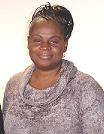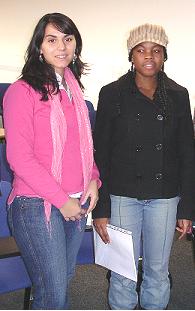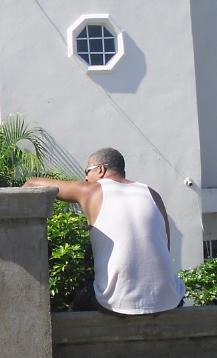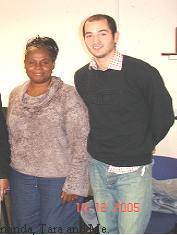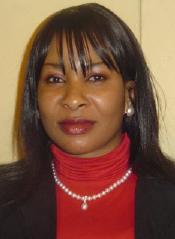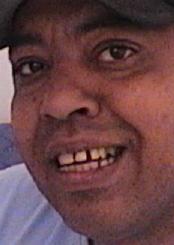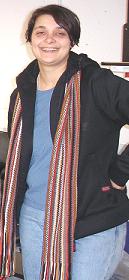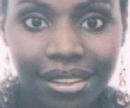Follow the submission instructions
Society - Madness - Crime
Choose one theme from: Authority and Power, Authority in Childhood, Childhood, Community, Crime and Punishment, Deviance and Response, Family, History, Imagination, Interrelate. Madness, Madness and Crime, Knowledge and truth, Knowledge and Power Organism, Political Perspective, Positive Science, Prison, Science, Philosophy, Theology, Self and Body, Sex, Self, body, sex and society, Situated Knowledge Surveillance, Statistics, Symbols, Theatre, Total Institution.
Choose one, two or three theorists to explore, in relation to the theme, from the list attached to the theme. Theme and theorists must be discussed with Andrew Roberts and agreed by him. You should also agree the texts you will use.
| Authority and Power |

|
Compare the perspective on authority and power in the work of two or three of the following: Ashley - Edmund Burke - Bentham - Robert Dahl - Geoff Dench - Emile Durkheim - Federalist Papers - Robert Filmer - Foucault - Godwin - Anthony Giddens - Hegel - Hobbes - Kant - Machiavelli - James Mill - John Stuart Mill - John Locke, - Macionis and Plummer - Thomas Paine - Rousseau - Schumpeter - Scruton - Max Weber - Wollstonecraft.
You need to distinguish authority and power. They are not just two words for the same thing and the quality of your essay will partly depend on the effort you put into examining their difference and how they relate in the theories of your authors. The word legitimacy is often related to authority.
Examples
Including Max Weber gives you clear definitions of authority and power.
Build on what others have done on Weber - See also what others have done respecting Talcot Parsons' translation of Weber's work. There is a need to draft an outline of Weber's life and works as it relates to authority and power.
Build on what others have done on Weber - See also what others have done respecting Talcot Parsons' translation of Weber's work. There is a need to draft an outline of Weber's life and works as it relates to authority and power.
Compare the perspective on authority and power in the work of Max Weber to the perspective of Thomas Hobbes
You could begin by reading the comparison of Hobbes and Weber in Social Science History and the extracts from Max Weber
Compare the perspective on authority and power in the work of Max Weber to the perspectives of Thomas Hobbes and John Stuart Mill
Compare the perspective on authority and power in the work of Max Weber to the perspectives of Emile Rousseau and Emile Durkheim.
Compare the perspective on authority and power in Thomas Hobbes' Leviathan with that of Michel Foucault in the Power/Knowledge collection.
Explore Emile Rousseau's concepts of authority and power. Show how he differed from Thomas Hobbes
Essential primary text: Rousseau's The Social Contract
Essential secondary text: Chapter four in Social Science History
Compare the perspective on authority and power in the work of John Locke and the writers of the Federalist Papers.
Compare the perspective on authority and power in the theories of Immanuel Kant and Jeremy Bentham, with special reference to morality and punishment.
Suggested start: Read
David Dewey's booklet on the problem of punishment. You could
develop the existing life and works for Bentham and
Kant, but focus
on the development of their theories of morality and how they relate to
punishment.
Compare the perspective on authority and power in the work Edmund Burke and Mary Wollstonecraft
Also check any biographical literature reviews for authors
Build on what others have done - Example: Durkheim - Weber
Build on what others have done - Example: Durkheim - Weber
useful combinations include:
two or three of: Mary Wollstonecraft, Godwin (her husband), Rousseau (who both admired), Burke (who criticised)
two or three of: Mary Wollstonecraft, Godwin (her husband), Rousseau (who both admired), Burke (who criticised)
two or three of Locke, Federalist Papers, John Stuart Mill, Dahl
Dahl will allow you to link modern political sociology
back to its
origins and (if you choose Mill) to contrast USA with British
theory.
two or three of Filmer, Burke, Mary Wollstonecraft, John Stuart Mill, Ashley, Scruton
two or three of Machiavelli, Hobbes, Rousseau, Kant, Hegel, Weber, Durkheim, Foucault, Dench
If you choose Locke and Durkheim, you should choose someone like Filmer or Rousseau or Scruton to give you a link. Filmer contrasts with Locke, but there are some similarities with Durkheim. Rousseau can be viewed as a link between Locke and Durkheim. On Scruton's analysis, Locke is a liberal theorist and Durkheim a conservative one. Frank Pearce disagrees about Durkheim
Foucault with Bentham and one other
| Authority in childhood and society |

|
Analyse, compare and discuss what (if anything) two or three of the following theorists say about authority and power in the family, the school, in society and in politics.
Black links go directly to the biographical literature review page
Ashley - Durkheim - Robert Filmer - Macionis and Plummer - Mill -
Examples
Analyse and discuss what Durkheim says about authority and power in the family, the school, society and politics
You could begin by making notes and collecting quotes on how Durkheim's
Moral Education relates to the terms
in the question.
Build on what others have
written about Durkheim
How what Durkheim says about authority and power in family, the school and in politics relates to my experience of bringing up children.
Analyse, compare and discuss what Sir Robert Filmer and Emile Durkheim say about authority and power in the family, the school, society and politics.
Analyse, compare and discuss what John Stuart Mill and Emile Durkheim say about authority and power in the family, the school, society and politics
| Childhood |

|
Relate the treatment of childhood, education and society in two or three of the following theorists: Ashley Cooper, William Blake, John Dewey, Filmer, Anna Freud, Sigmund Freud, Locke - John Stuart Mill, William Morris, Talcott Parsons, Owen, Pavlov, Rousseau, Skinner, Watson, Mary Wollstonecraft, William Wordsworth,
See also the
contemporary text book question
Examples
Relate the treatment of childhood, education and society in John Locke and Robert Filmer. Does this relate to both European and African societies?
Relate the treatment of childhood, education and society in William Blake's Songs of Innocence and Songs of Experience
Think about childhood in William Blake's Songs of Innocence and Experience. How does it relate to his ideas on education and society, and how do his ideas relate to those of Jean Jacques Rousseau and Mary Wollstonecraft.
Build on what others have
written on this subject
Relate the treatment of childhood, education and society in Rousseau's Emile
Relate the treatment of childhood, education and society in Rousseau to the poetry of William Wordsworth and William Blake
Relate the treatment of childhood, education and society in Rousseau and Freud
Relate the treatment of childhood, education and society in John Stuart Mill and Sigmund Freud.
Start by thinking about what
Freud said about Mill
Relate the treatment of childhood, education and society in Freud, Watson and Skinner.
OR
Examine the theories of Sigmund Freud, John Watson and Burrhus Skinner in relation to their perception of childhood and how it relates to education and society.
Essential primary texts:
Freud's 1909 lectures
Watson and Rayner's 1920 article: "Conditioned Emotional Reactions"
Skinner's 1948 novel: Walden Two
This question enables you to compare
psychoanalytic and (two
different)
behaviourist views of childhood and how they relate
to education
and society. Build on what others have done:
Freud -
Watson -
Skinner -
These links will lead you to much of your reading. As core texts I suggest
Freud's
1909 lectures
- Watson and
Rayner's 1920 article and
Skinner's 1948 novel Walden Two
Compare the treatment of childhood, education and society in the work of Talcott Parsons to their treatment in the poetry of William Blake and William Wordsworth.
Begin by loking at
Parsons and Bales 1955 Family,
Socialisation and Interaction Process and
Parsons 1964
Social Structure and Personality
Relate the treatment of childhood, education and society in a
[specified]
21st century textbook of Sociology to the treatment by one or
two of the
following theorists: Robert Filmer, John Stuart
Mill, William Morris, Sigmund Freud, Talcott Parsons.
| Community |

|
Explore the idea of community in the work of one, two or three of the following: Thomas Carlyle, Charles Crook, John Dewey, Emile Durkheim, Dennis Hardy, Friedrich Hayek, Hegel, Adolf Hitler, Suzy Johnston , Marx and/or Engels, William Morris, Sorokin Tonnies, Weber, Willmott and Young,
Examples
Suggestion: The classical theorists, Marx/Engels, Durkheim and Weber, make a useful combination. (or Tonnies could replace one of them)
Suggestion: Combining Carlyle, Marx/Engels and Morris would enable you to study the development of marxist theory in an unusual and interesting, way.
Explore the idea of community in Engel's The Origin of the Family, Private Property and the State in relation to family based and state based societies.
Explore the idea of community in Engel's The Origin of the Family, Private Property and the State in relation to family based and state based societies. Does this help us analyse the problems of post-colonial Africa?
You should acquaint yourself with material about Africa
(See subject index for
Africa), so that you know where you are going. However, this
first task is to analyse what Engels says about community, pre-state family
based political organisation, and the development of the state.
Explore the idea of community in Engel's The Origin of the Family, Private Property and the State in relation to family based and state based societies. Illustrate with examples from Somalia
Compare the concept of "morality in community life" in the works of John Dewey and Emile Durkheim
Build on what others have done on this topic -
Explore the idea of community in the work of Adolph Hitler, Karl Marx, Friederich Engels and Ferdinand Tonnies
Explore the idea of community in the theories of Adolf Hitler and sociologists of his time. [One student used Weber, Arthur de Gobineau and Ludwig Gumplowicz as her comparisons].
Particularly useful combinations with Hitler include Hegel, Tonnies or
Weber, and Sorokin. This allows you to compare and contrast the Nazi
ideas of community with more coherent previous German social theory and
contemporary sociological theory. See the
Social Science History Timeline 1942
for some other useful reading.
|
Crime and Punishment
Deviance and Response |

|
Make sure you follow the links on crime, deviance and punishment
below. You must, deal with both crime (or deviance) and punishment (or the
response to deviance) in your essay.
Explore the themes of crime and punishment in two or three of the following: OR
Explore the themes of deviance and the response to deviance in one two or three of the following:
Beccaria - Jeremy Bentham - Jack Douglas - Emile Durkheim - Eysenck - Foucault - Kant - Macionis and Plummer - Robert Merton - Jock Young
Go to Durkheim
questions -
Merton
questions
Examples
Beccaria -
Bentham -
Foucault
Explain Cesare Beccaria's
ideas on crime and punishment. [This is a
simple question
for starting - although explaining is not so simple. It can be expanded in
different ways later - as below]. Build on
what others have done about
Beccaria
Essential primary text: Cesare Beccaria's
Of Crimes and Punishments (1764)
Explain Cesare Beccaria's
ideas on crime and punishment. Relate these to the
discussion of classical criminology in Taylor, Walton and Young's
The New Criminology
Essential primary texts: Cesare Beccaria's
Of Crimes and Punishments (1764)
and Taylor, Walton and Young's
The New Criminology
Explain Bentham's
ideas on crime and punishment. [This is a
simple question
for starting - although explaining is not so simple. It can be expanded in
different ways later - as below]. Build on
what others have done about
Bentham
You could start with the
Bentham entry. Follow the links from this. Look at the
intellectual biography that we are developing. Look at the extracts from
his work. Follow the links through to the full texts.
Explore the thories of crime and punishment in the work of Cesare Beccaria,
Jeremy Bentham and Michel Foucault
Explore the theories of crime and punishment in the work of Beccaria and
Bentham and relate this to the
codes of the criminal law in France after
the French Revolution
Explore the utiitarian approach to crime and punishment in the work of
Beccaria and Bentham and discuss the criticisms of Immanuel Kant
Explore the themes of crime and punishment in the work of Bentham
and Foucault
Explain Bentham's
ideas on crime and punishment and contrast with Shariah
law.
When you have drafted something about Bentham's theories of both crime and
punishment,
find your sources
for
Shariah and compare and contrast. If you find other sources for
Shariah (not listed) we will add them to the list.
You could consider Sharia as a theological theory of law and relate it to
the discussions in
Social Science History chapter two.
The association of Shariah with "medieval punishments"
(BBC website) could be related to Foucault's contrast between
"torture" and "punishment" in
Discipline and Punish
Explain Bentham's
ideas on crime and punishment and relate to the
behaviourism of J.B. Watson.
Make sure you follow the links to the authors above. Read carefully
and follow the links within the articles on the authors. You should make
full use of these resources.
Start with
Beccaria. Make notes and quotes separating
his theory of crime and his theory of punishment. Build on
what others have done.
You could start by reading Bentham. Following links from
the Bentham entry should suggest to you what to read. - And have
a look at
previous work
You could start by reading
Foucault, M. 1977 Discipline and Punish: The Birth of
the Prison - And have a look at
previous work
Build on
what others have done about
Bentham
Read Bentham
extracts - see works
by and about Bentham
| Durkheim | Life and works |
Make sure you follow the link to Durkheim above. Read carefully and
follow the links from the Durkheim article. You should make full use of
these resources. The History of Social Ideas
essay on Durkheim (and Merton) may help you. Also read
Social Science History,
Essay Six:
"Durkheim and Weber's
Contrasting
Imaginations".
Explore the themes of crime and punishment in the work of Emile Durkheim OR Explore the themes of crime and other forms of deviance and punishment and other responses to deviance in the work of Emile Durkheim
Essential primary texts: Emile Durkheim's The Division of Labour in Society (1893) and The Rules of Sociological Method (1895) (1895).
Start
with the extracts. There is an index that lists
crime and
punishment. Read the entry on the
crime timeline about
Durkheim and crime. Notice how his theories of crime and
punishment are inextricably linked to one another and to his theories of
society. You will get an overview of these interconnections from
the Durkheim and Merton page that was constructed by other
students. The two main books you will be using are
The Division of Labour in Society (1893) and
The Rules of Sociological Method (1895). James Moody's
online notes
on The Division of Labour in Society should help you.
Suicide
Make sure you follow the link to Suicide above. Read carefully and follow the links from the Suicide article. You should make full use of these resources.
Make sure you follow the link to Suicide above. Read carefully and follow the links from the Suicide article. You should make full use of these resources.
Explore the themes of deviance and the response to deviance in the work of Emile Durkheim, with respect to suicide.
OR
Explore the theme of suicide and the response to deviance in the work of Emile Durkheim.
Essential primary text: Emile Durkheim's Durkeim's Suicide. A Study in Sociology (1897)
Begin with
Durkeim's
Suicide. A Study in Sociology - There are
online extracts. Also read
"Durkheim and Weber's Contrasting Imaginations" in
Social Science History.
Suicide is discussed as a
"social fact". Also read the lecture on
Durkheim: Suicide and Social Solidarity
You may want to read Jack Douglas's criticism. In which case, you could make your question:
"Explore the theme of suicide and the response to deviance in the work of Emile Durkheim and Jack Douglas".
You could also consider the
statistics question.
Explore the theme of deviance and the response to deviance in the work of Robert Merton.
Essential primary text: Robert Merton's "Social Structure and Anomie" American Sociological Review 3, pp 672-682. 1938 (Preferable), or the chapter on "Social Structure and Anomie" in later books.
Begin with the
extracts from Merton. You will need to discuss his concepts of
conformity, deviance and crime.
Durkheim and Merton
Explore the themes of crime and other forms of deviance and punishment and other responses to deviance in the work of Emile Durkheim and Robert Merton
Follow the relevant advive for Durkheim and Merton
| Prison as Punishment |

|
Examine Bentham's theory of the prison as punishment as described by Foucault in Discipline and Punish
You may want to start by drafting a description of those aspects of Bentham's life and works that relate to the Panopticon. You can develop this from what others have done on Bentham. Your basic reading is Foucault's Discipline and Punish. You will need to provide a properly referenced analysis of relevant parts, in your own words. Start with the extracts on Bentham and the Panopticon. Build on what others have done on Foucault. You will also want to read the article on Surveillance.
Also see Foucault on
the origin of the prison
See
subject index on
Prison
Were docile bodies essential for the development of punishment in an organised way? Examine with respect Bentham's theory of the prison as punishment as described by Foucault in Discipline and Punish
| Family |

|
Discuss the family in relation to society in the work of one, two or three of the following: Aristotle - Robert Filmer - John Locke - The 1611 Bible - Jean Jacques Rousseau - Adam Smith - Olympe de Gauges - Marx and/or Engels - John Stuart Mill - Emile Durkheim - Friedrich Hayek - Roger Scruton - Zygmunt Bauman.
Examples
Discuss the family in relation to society in the work of Robert Filmer and John Locke and how it relates to the 1611 Bible. How does this relate to modern times?
You could start by reading
Hobbes, Filmer and
Locke - 17th Century Models for a Science of Society
Discuss the family in relation to society in the work of Jean Jaques Rousseau
Essential primary text: Rousseau's Emile or On Education 1762
Discuss the family in relation to society in the work of Emile
Durkheim
You could begin by making notes and collecting quotes on how Durkheim's
Moral Education relates to the terms
in the question.
Build on what others have
written about Durkheim
Discuss the family in relation to society in the work of Talcott Parsons
Build on what others have done about
Parsons
Discuss the family in relation to society in the work of Talcott Parsons and compare this to the image of the family in William Blake's poetry.
Begin by loking at
Parsons and Bales 1955 Family,
Socialisation and Interaction Process and
Parsons 1964
Social Structure and Personality
| History |

|
Explore the significance of history in the work of one, two or three of the following: Aristotle, Edmund Burke, J.B. Bury, Mary Beard, Gordon Childe, Auguste Comte, Charles Darwin, Simone de Beauvoir, Emile Durkheim, Friedrich Engels, Ronald Fletcher, Foucault, Hegel, Friedrich Hayek, Adolph Hitler, Leonard Hobhouse, Karl Marx, Thomas Babington Macaulay, John Stuart Mill, Karl Popper, Sheila Rowbotham, Henri Saint-Simon, Adam Smith, R.H. Tawney, Max Weber, Mary Wollstonecraft, Wilhelm Wundt
Examples
Suggestion: Explore the significance of history in the work of Henri Saint-Simon and relate it to the development of social science.
This question develops themes raised in the first lecture. See the
Saint Simon
chart.
Explore the significance of history in the work of Karl Marx, and Friedrich Engels and relate it to the development of social science.
Begin by analysing what
The Communist Manifesto says about history. Begin with
"The history of all hitherto existing society is the history of class
struggles" - Study the article
Marx and Engels: Scientific Socialism and
Summary of Historical Materialism
Essential primary text:
The Communist Manifesto
Essential secondary text:
Marx and Engels: Scientific Socialism
Suggestion: Explore the significance of history in the work of John Stuart Mill and relate it to the development of social science.
Compare the significance of history in the work of Charles Darwin to its significance in the writing of Adolf Hitler
Analysis two key texts:
Charles Darwin's On the Origin of Species by Means of Natural
Selection (1859) and
Adolph Hitler's Mein Kampf (1925-1927) with respect to
the significance of history
| Imagination |

|
Examine the part played by imagination in the work of one, two or three of the following and relate this to the study of society and/or science: William Blake, Samuel Taylor Coleridge, Emile Durkheim, Julie Ford, Sigmund Freud, Suzy Johnston , Mary Lamb, John Locke, Charlotte Mew, Juliet Mitchell, William Morris, Frank Pearce, Karl Popper, Mary Wollstonecraft, Mary Shelley, Mary Warnock, Max Weber Oscar Wilde.
Examples
Investigate the role of imagination in Mary Wollstonecraft's view of science. Look at the inter-play of imagination and observation in the creation of another human by Frankenstein (in Mary Shelley's novel), and relate this to Karl Popper's theory of the role of imagination in science.
Explore the imagination of Mary Shelley and William Morris in their novels Frankenstein, The Last Man and News from Nowhere. Relate this to the study of society and/or science.
The first thing to do is, probably, to enjoy reading one or more of the
novels. See
Mary Shelley and
William Morris for electronic and printed texts. With both
authors there are discussions of the social content on this site. Follow
the timeline links from
Mary Shelley and
William
Morris - and see what happens in
2073
Build on what others have done. The work on
Mary Shelley may suggest other useful combinations to you. Mary
Wollstonecraft was the mother of Mary Shelley, the author of Frankenstein.
You could compare them with John Locke or Karl Popper on science, Mary
Warnock on imagination, or Oscar Wilde on science and art.
Suggestion: You could compare Sigmund Freud (Interpretation of Dreams) with Mary Shelley and William Morris, both of whom structured books around a dream. Shelley enables you to relate dreaming to science and Morris enables you to involve interpretations of marxism.
| Interelate |

|
Explore the interrelationship between the ideas of:
Jeremy Bentham and Michel Foucault
| Madness |

|
Explore reason and unreason in the work of one, two or three of the following: Bentham, Anthony Clare, Eysenck, William and Mrs Ellis Foucault, Freud, Goffman, Susan Tyler Hitchcock Hume, Suzy Johnston , Laing, Charlotte Mew , Juliet Mitchell, Sedgwick, Scruton, Szasz, William Tuke,
Examples
Explore reason and unreason in the work of Foucault, William Tuke and William and Mrs Ellis.
Foucault discusses William Tuke and you could consider Foucault's arguments
about
moral management in comparison with those of Tuke and/or William
and Mrs Ellis. Dr and Mrs Ellis
developed
moral management in a larger asylum than Tuke. Build on what
others have done:
Foucault -
Tuke -
Ellis -
Explore reason and unreason in the work of Sigmund Freud
As a start on Freud's approach to reason and unreason,
you could consider the
explanation he developed for certain
"abnormal psychic formations".
in
Interpretation of Dreams. Alternatively, you could consider the
contrast he makes between religion and science in
"The question of a Weltanschauung"
Examine Susan Tyler Hitchcock's explanations for the madness and recovery in the life of Mary Lamb.
Essential primary text: Mad Mary Lamb: Lunacy and murder in literary London by Susan Tyler Hitchcock
Examine the explanations for mental illness and recovery in the life of Suzy Johnston.
Suggestion: Using my mental health and civil liberties article as a start, you could consider Peter Sedgwick's ideas in comparison with one or two of Anthony Clare, Ronald Laing, Michel Foucault, Erving Goffman, and/or Thomas Szasz.
Suggestion: Freud, Eysenck and Goffman allow you to make a comparison of psychoanalytic, behaviourist and symbolic interactionist approaches to reason and unreason.
Suggestion: With a Bentham, Foucault and Eysenck combination, you could use Bentham's utilitarianism to define reason (for him) as the pursuit of happiness and the avoidance of pain. Then use Foucault to show how this was applied to prisons and asylums. Then look at the refinement of the utilitarian position by Eysenck.
| Madness and crime |

|
Examples
Explore the relation between madness and crime in the work of Cesare Lombroso
Essential primary text: Cesare Lombroso's Criminal Man (1876) Passages in Gibson and Rafter (below) pages 43 to 93 - Or text arranged with Andrew.
Start by reading Lombroso Criminal Man. Using the
translation by Mary Gibson and Nicole Hahn Rafter, you
could start by studying the (first)
1876 edition. This
is pages 43 to 93 of Gibson and Rafter. (Pages 39 to 41 are Gibson and
Rafter's introduction to the edition). See
Contents list and brief
extracts. You could also consult the
1911 English summary by his daughter, which is available online.
See partial
Contents list and extracts
OR Start by reading Lombroso Criminal Woman
Build on what others have done: See
essay by Cristina Garcia
Explore the relation between madness and crime in the work of
Eysenck and
Jock Young.
Explore the relation between madness and crime in the work of Eysenck
as
explained by Taylor, Walton and Young in
The New Criminology.
Passages from Taylor, Walton and Young
relating to Eysenck are online.
Compare Foucault's approaches to the control of madness and crime
| Knowledge and truth |

|
Compare two or three of these author's theories of knowledge and truth: John Dewey - Mary Douglas - Emile Durkheim - Michel Foucault - Immanuel Kant
Examples
See the entry on
knowledge
Compare the theories of knowledge and truth of Kant and Durkheim
Kant's
What is Enlightenment as a relevant text.
Also Durkheim passages such as those in
Elementary Forms of Religious Knowledge
Compare the theories of knowledge and truth of Immanuel Kant, Emile Durkheim, and Michel Foucault
The people and ideas entries for
Kant - Durkheim and
Foucault should be
useful. Also try student work on
Kant -
Durkheim and
Foucault
Compare the theories of knowledge and truth of Immanuel Kant, Emile Durkheim, and Mary Douglas
| Knowledge and power |

|
Investigate Michel Foucault's concepts of power and knowledge and how they inter-relate
Suggestion: Read and view the
You Tube clip
You can approach this question in many different ways. For example, you could consider medicine, psychiatry, gynaecology, penology, or education from the perspectives of knowledge and power. The books by Foucault that you use will depend on the way you approach the question. It would be a good idea to study some of the essays in Power/Knowledge Selected interviews and other writings, 1972-1977 by Michel Foucault
| Organism |

|
Analyse and compare the images of organism and system in the work of one or two of the following: Auguste Comte - Charles Darwin - Adolph Hitler - Bronislaw Malinowski - Radcliffe- Brown - Talcott Parsons - John Rex - Herbert Spencer
Examples
Analyse and compare the images of organism and system in the work of Talcott Parsons
| Political Perspective |

|
With respect to one, two or three of the following EITHER Examine the relation of their theories to politics OR Examine the relationship between their theories and their political objectives Emile Durkheim, Rousseau, Weber, Wollstonecraft,
Examples:
Examine the relation of the theories of Jean Jacques Rousseau to politics
OR
How does
Rousseau's political theory relate to the
French
Revolution?
You could start by reading
"Can theory redesign society?
Rousseau, the French Revolution, Women and Slaves and following the links to Rousseau's work. You could also look at the lecture on the French Revolution and Human Rights
Rousseau, the French Revolution, Women and Slaves and following the links to Rousseau's work. You could also look at the lecture on the French Revolution and Human Rights
Examine the relation of the theories of Jeremy Bentham and Robert Owen to politics
The theory that Bentham share in common is
utilitarianism. The intellectual relationship
between Bentham and Owen is discussed in my article on
Radicals, Socialists and Early
Feminists, which draws on the research of Jackie Lugg. The
relation between ideas and welfare politics is discussed in
Social Science and the 1834 Poor
Law - The Theories that Smith, Bentham, Malthus and Owen made:
| Positive Science |

|
Compare and contrast the treatment of "positivism" in two or three of the following: Auguste Comte, Michel Foucault, Leszek Kolakowski, Bertrand Russell, Jock Young,
Examples
Compare and contrast the treatment of "positivism" in the work of Auguste Comte, Emile Durkheim and Jock Young.
| Science, Philosophy, Theology |

|
Examine the relation of science, philosophy and theology in one, two or three of the following: Thomas Aquinas, Auguste Comte, Emile Durkheim, Bertrand Russell, Mary Shelley, Mary Wollstonecraft
Examples
Examine the relation of science, philosophy and theology in the work of Thomas Aquinas, Auguste Comte and Bertrand Russell.
Useful combinations include:
Comte with Thomas Aquinas and Durkheim
If you try this, I would suggest you use
Comte as your key author
Mary Wollstonecraft with Mary Shelley and Comte
| Self anb Body |

|
Examine the relationship of self and body in one, two or three of the following. Some of these links go directly to work that other students have done - Follow links from there
Plato - Rene Descartes - John Stuart Mill - Sigmund Freud - George Herbert Mead - Erving Goffman - Christine Battersby - Elizabeth Grosz - Jana Sawicki
Examples
Examine the relationship of self and body in relation to John Stuart Mill and Sigmund Freud
I suggest that you begin this topic by reading
what Freud wrote about Mill
Analyse Freud on aspects of body (brain) and self (mind) using the excavation tool.
Read Mill's Subjection of Women and his Autobiography and consider if you agree with Freud.
Examine the relationship of self and body in the work of George Herbert Mead and Erving Goffman
Build on what others have done on
Mead with respect to both
self and its relationship to
body. Use the
extracts from Mead. There are index links for self and body to
help you.
Build on what others have done on Goffman. The section on theatre is a good point to start. Use the extracts from Goffman. A copy of his book on Stigma could be particularly helpful.
A variation on this question
Examine the relationship of mind and body and society in the work of George
Herbert Mead and Erving Goffman
Examine the relationship of self and body in the theories of George Herbert Mead and Christine Battersby
Essential primary texts: George Herbert Mead's Mind, Self and Society, from the Standpoint of a Social Behaviourist (1934) and Christine Battersby's "Her Body/Her Boundaries" article (1998/1999)
Examine the relationship of self and body in the theories of Jana Sawicki
| Sex |

|
Compare the social significance of sex in the theories of two or three of the following: Friederich Engels. Shulamith Firestone, Anna Freud, Michel Foucault, Sigmund Freud, Erich Fromm, Malthus, Macionis and Plummer , Juliet Mitchell, William Morris, Plato, Wilhelm Reich, Rousseau, Roger Scruton, Wollstonecraft,
You are advised to take Freud as your key author.
Brown, J.A.C.1961/1964 discusses
Anna Freud,
Reich and Fromm.
Mitchell,
J. 1974 discusses Reich and Laing
Examples
Examine the relationship of sex and society in the work of Sigmund Freud
Build on what others have done - The life and works outline does
not successfully relate Freud and sex, or relate
that to its social significance. A serious
effort to do this would make an excellent start.
Compare the social significance of sex in the work of Plato and Sigmund Freud
Essential primary texts: Plato's Republic and Freud's Outline of Psychoanalysis.
Freud saw a distinction between male and female (personalities) as having a central effect on the content of our minds. He disagreed with theorists such as Plato, Wollstonecraft, Taylor and Mill who had argued that, in almost everything except physical organs and ability to bear and breast feed children, men and women are essentially the same. (Read Sigmund Freud on personality and society The scientific study of unreason)
I suggest you use
Plato's Republic
and Freud's
Outline of Psychoanalysis, and compare them. The
exercise in excavating Freud should help you.
Compare the social significance of sex in the theories Sigmund Freud and Erich Fromm
| Situated Knowledge |

|
Discuss the relevance of situated knowledge to social theory with respect to two or three of the following:
AWAITING ENTRY
| Surveillance |

|
Examine the importance of looking (observation) in the writings of one, two or three of the following: Bentham, Connolly, Foucault, Goffman, Owen
Examples
Examine the importance of looking (observation) in the
writings of
Bentham and
Foucault.
Relate the treatment of looking (observation) in the writings of Bentham and Foucault to issues of surveillance in the 21st century.
21st century links:
Fulcher and Scott -
David Lyon -
Richard Jones in
Hale Hayward Wahidin and Wincup
Compare surveillance observation or inspection in the factory/community of New Lanark in the work of Owen, with the prison as a place of observation described by Foucault and the asylum as a place with an underlife, away from observation, as analysed by Goffman.
Examine the importance of looking (observation) in
Erving Goffman's theory of asylums
Build on what others have done:
Goffman
| Statistics |

|
Examine the contribution made by statistics to the study of society in the work of one, two or three of the following: Ashley, Durkheim, Jack Douglas, Engels, William Farr, Francis Galton, Thomas Malthus, Quetelet, Jock Young, Peter Townsend,
Examples
Use the statistical writings of Adolphe Quetelet and William Farr to look at the way the historical construction of the normal person was used to evaluate mental hospitals.
Examine the contribution made by statistics to the study of society in the work of Emile Durkheim and his critic, Jack Douglas.
| Symbols |

|
Relate the treatment of symbols in one, two or three of the following theorists to their concepts of mind and society: Durkheim, Freud, Hobbes, Hume, Locke, Mead, Juliet Mitchell, Parsons,
Examples
Relate the treatment of symbols in Talcott Parsons and George Herbert Mead to their concepts of mind and society
Examine the formation of symbols in the work of George Herbert Mead. Does this help us understand the public sphere use of symbols? Relate to the work of one of the following, Theodor Adorno - Stuart Hall - Jürgen Habermas - Zygmunt Bauman.
Examples
Examine the formation of symbols in the work of George Herbert Mead. Does this help us understand the public sphere use of symbols? Relate to the work of Jürgen Habermas
Examine the formation of symbols in the work of George Herbert Mead. Does this help us understand the media and consumption in the work of Zygmunt Bauman?
| Theatre |

|
Examine the theatrical imagery in the theories of one, two or three of the following: Erving Goffman, Macionis and Plummer , George Herbert Mead, Peter Morea, Talcott Parsons
This question could be adapted by considering the issues in relation to the work of a dramatist: Shakespeare for example.
Examples
Examine the theatrical imagery in the theories of George Herbert Mead and Erving Goffman.
| Total Institution |

|
Compare the analysis of the asylum, workhouse, alternative community, factory/community, family, and/or prison in the work of two or three of the following theorists: Bentham, Cohen and Taylor, Connolly, Donnelly, Foucault, Goffman, Dennis Hardy, Suzy Johnston , Kathleen Jones, Laing, Owen, Thompson and Wheeler, Peter Townsend, Rothman
Goffman's concept of a total institution could provide you
with a useful
conceptual framework - so consider including him. Build on what others have
done about
Goffman. - Alternatively, you could
focus on Goffman
If you choose to include family, you should use Owen and/or Thompson and Wheeler and/or Laing amongst your authors.
If you choose to include alternative communities, you should use Dennis Hardy's book on them. This combines well with Owen.
Workhouses (poor-houses) are best considered with asylums. Foucault provides a link between the two in that he argues that the lunatic asylum (mental hospital) developed from institutions for general confinement of the poor. Rothman would combine well with Foucault. Gothman's studies of total institutions were based on a mental hospital.
Examples
How might a total institution alter the characteristics of an individual (if at all)? Examine in relation to Erving Goffman's concept of the moral career of a mental patient and compare to Lombroso's ideas about the need for criminal lunatic asylums.
Start with a careful analysis of the essays in Goffman's 1961 book
Asylums. Build on what others have done with
Goffman
Essential primary text for first part of the question: Goffman's Asylums, essays "On the Characteristics of Total Institutions" and on "The Moral Career of the Mental Patient"
Compare the analysis of the asylum and alternative community, in the work Erving Goffman, Dennis Hardy and Robert Owen.
Relate Goffman's concept of
total institution to his concept of
the
moral career and
underlife.
Relate Goffman's ideas on
total institution to
Beccaria and
Bentham's ideas on
punishment
Start with a careful analysis of the essays in Goffman's 1961 book
Asylums. The question could later be related
to
Kathleen Jones or to
Ken Kesey's One Flew over the Cuckoo's Nest. One student
used Goffman's concepts to analyse Nelson Mandela's argument that prison is
a crucible that "tests a man's character".
Build on what others have done:
Goffman
| If you want to join the picture gallery - Let Andrew have your picture! |

|
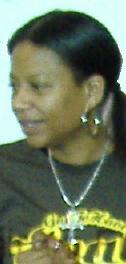
|
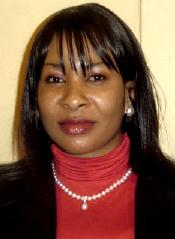
|
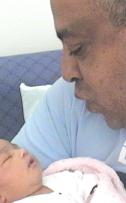
|
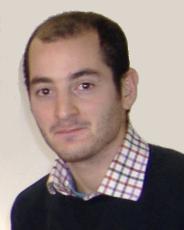
|

|
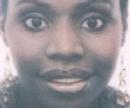
|
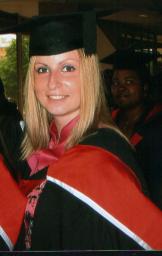
|
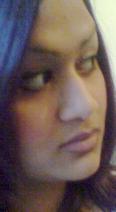
|
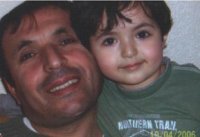
|
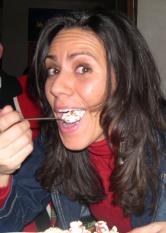
|
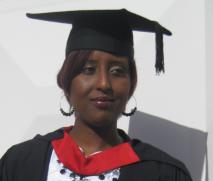
|
 Study
Link
Study
Link
 Andrew Roberts' web Study Guide
Andrew Roberts' web Study Guide
 Top
of
Page
Top
of
Page
 Take a Break - Read a Poem
Take a Break - Read a Poem
 Click coloured words to go where
you
want
Click coloured words to go where
you
want
Andrew Roberts likes to hear from users:
To contact
him, please
use the Communication
Form
| Books |
| Literature links |
|---|
|
Finding your own resources This article is being written to guide you. Keep going back to it. Copac and other library catalogues
Referencing
Biographical literature reviews should be in your own words and focused on the question. Material should not be copied from websites or other sources. See Plagiarism. The only exception is the use of parts of an existing biographical literary review from our collective website when you are developing it. If you find a relevant biography or literature review on the web or in a book, consider writing a précis of its salient points and then basing what you write (in your own words) on the ones that are most relevant to your question.
|
| Biography links |
|
what is a Biographical Literature Review? sources of biographical information: General study links Social science history links Wikipedia and other encyclopedias
|
| Thinking links |
|
Generating
ideas
Methods include the creativity ball game Words to help with thinking and learning These include key words, which are as important for creativity as they are for literature searching and analysis.
|
| Autonomous learning links |
|
Be in
control
|
| Group work links |
|
Groups
Action Learning
|
